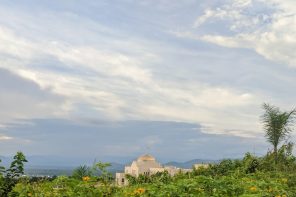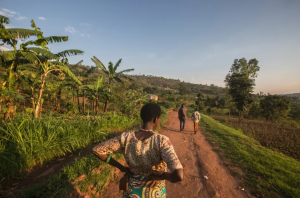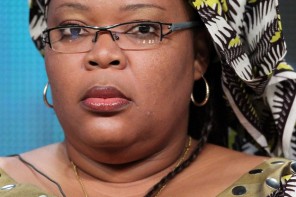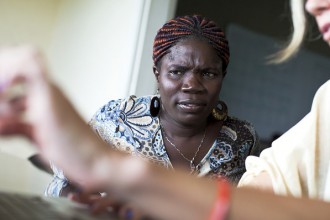My colleague and I could think of very few things in the world that could possibly be as interesting as the National Museum of Kinshasa. What would the exhibit text say? How colonial would it be? What would be on display, and whose narrative would it serve?
We never found out. We went to the Academie des Beaux Arts, where the National Museum of Kinshasa is supposed to be. It was closed—unclear whether for the afternoon or forever. But we did see some artwork for sale, presumably by the students there. I wondered, looking at some of it, whether it was the expression of an artistic imagination, or an imitation of what tourists are supposed to buy. Some pieces were beautifully original, others seemed like a vague guess made with the faith that, maybe, I or someone like me might show up.
But this was an art school, not a crafts market, and that in itself made it stand out. In Goma, on the other side of the DRC, and in so many other towns I’ve visited in Rwanda, crafts are everywhere. Well-meaning NGOs who serve women—widowed women, victims of sexual violence, single mothers, whomever—almost without exception teach them to sew. The Intrepid Journalist, who has spent a year reporting around Africa, says this is the continent’s biggest problem—so much supply, so little demand. One NGO had a tailor’s workshop stacked full of probably useless finished goods: Purses, aprons, laptop bags, you name it. But they can’t figure out how to sell them, and the materials cost too much, so they’ve taken a sewing hiatus.
Who decided, the Intrepid Journalist and I wonder, that Africa could sew its way out of poverty? Where’s the market for this stuff? How do you ship it there? And who pays for that? Maybe there’s a reason those Macy’s baskets are $70 after all.
There’s probably even less of a market for the work of the students at the Academie, but they didn’t seem to care. The art school was full of students—young people smacking wooden tools together in the sculpture studio, and a few guys slicing through metal with saws. The buildings had fresh paint—a bright aqua green, just a tone more green than bright turquoise so ubiquitous in villages that it has become, in my mind, the color of poverty. The building seemed to me bold and full of self-assurance, even a little self-impressed, with its gleaming white windows. The lawn was full of plaster sculptures (and a goat, tied with a rope to a tuft of grass, was ‘mowing’ the lawn), which is to say, there was a sculpture garden.
It felt like a proud and industrious place, where the market for things being produced is irrelevant; it is, after all, an art school. An administrator told us it costs $100 a year to go to school ($200 if you’re a foreigner), and the materials are free. I wondered how much the materials in these workshops cost the school; I wanted to know whether studying art in Kinshasa is the privilege of the very rich, or whether there are kids in slums somewhere doodling who might one day find themselves etching a fine arabesque into a piece of copper with a nail, and think there’s nothing better in the world to be doing.
The thing is, in Kinshasa, there probably isn’t. Unless you are born into a family of politicians or businessmen, painting and sculpture makes as much sense as anything else, which is to say that if you’re making no money you might as well make art. $11.11.





i wish there was a way to ship things here, and sell them, providing a market… i’d love a basket, a purse, something. not only would it satisfy the part of me that needs tactile items, but, i would know it was helping somewhere….